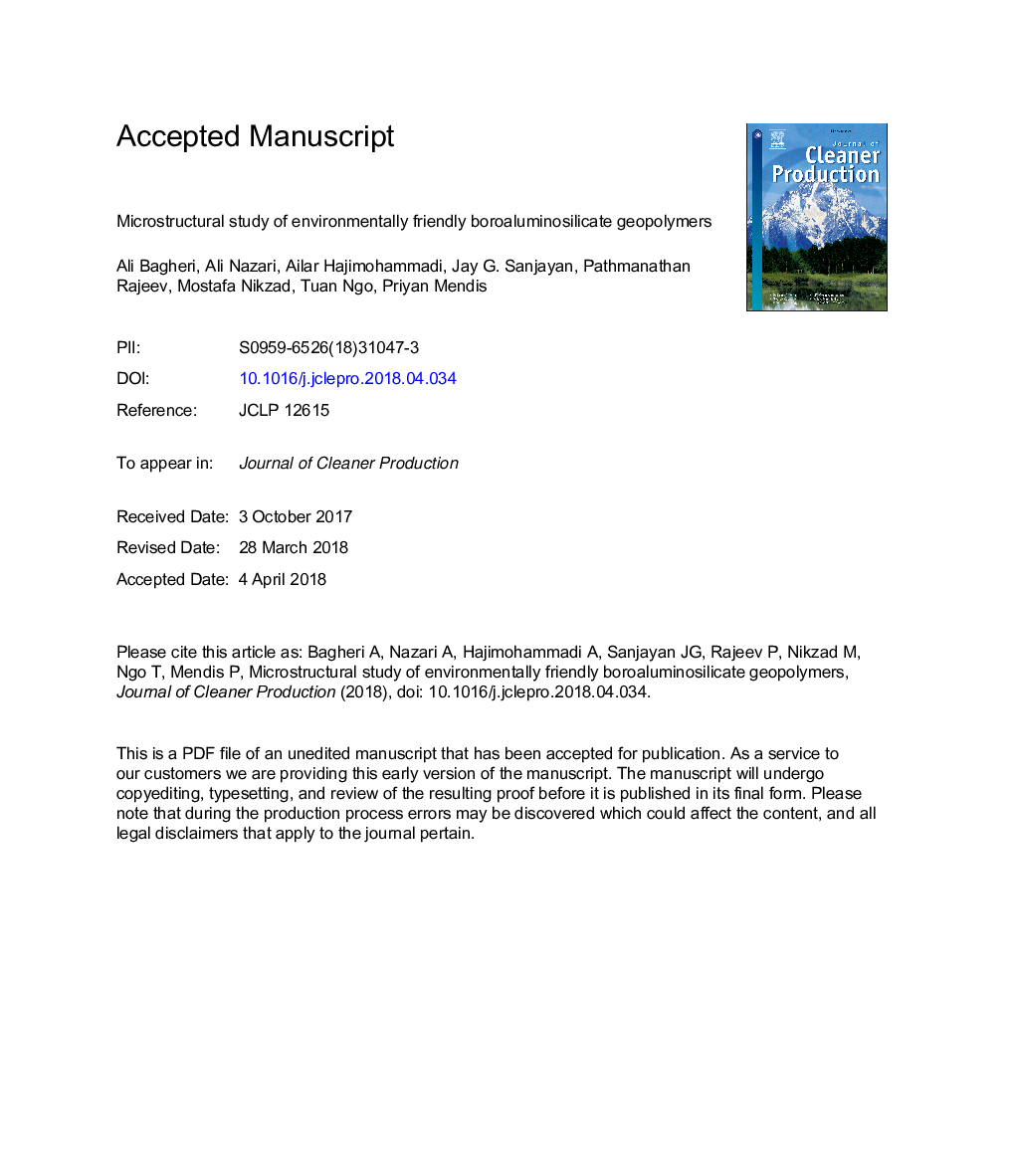| Article ID | Journal | Published Year | Pages | File Type |
|---|---|---|---|---|
| 8095307 | Journal of Cleaner Production | 2018 | 22 Pages |
Abstract
This paper is investigating a more environment-friendly type of alkali-activated materials so-called boroaluminosilicate geopolymer (BASG). The microstructural and thermal behaviour of boroaluminosilicate geopolymers is studied using Fourier transform infrared spectroscopy (FTIR) and thermogravimetric analysis (TGA) respectively. The chemical bonds forming the geopolymeric network as well as the reaction of the matrix at the elevated temperatures up to 600â¯Â°C are investigated. Different combinations of sodium silicate, sodium hydroxide solution and borax are utilised to activate fly ash. The effect of boron ions, from the alkaline solution, on forming geopolymer gel is the main idea of the study. FTIR spectroscopy shows that not only boron ions have an undeniable influence on the formation of geopolymer compounds but also the change in the content of sodium silicate has a significant role in the gel homogeneity of geopolymer products. The existence of certain peaks relating to boron compounds is an evidence to the formation of the BASG binder. These peaks vary as the composition of the activator is changed. In addition, TGA results reveal that the water molecules embedded within the matrix could be one of the main reasons for changes in the mechanical characteristics. Loss of water at the temperatures above 200â¯Â°C has a similar pattern as of the strength development of the samples. It maintains the significant role of water molecules in the geopolymer structure.
Related Topics
Physical Sciences and Engineering
Energy
Renewable Energy, Sustainability and the Environment
Authors
Ali Bagheri, Ali Nazari, Ailar Hajimohammadi, Jay G. Sanjayan, Pathmanathan Rajeev, Mostafa Nikzad, Tuan Ngo, Priyan Mendis,
